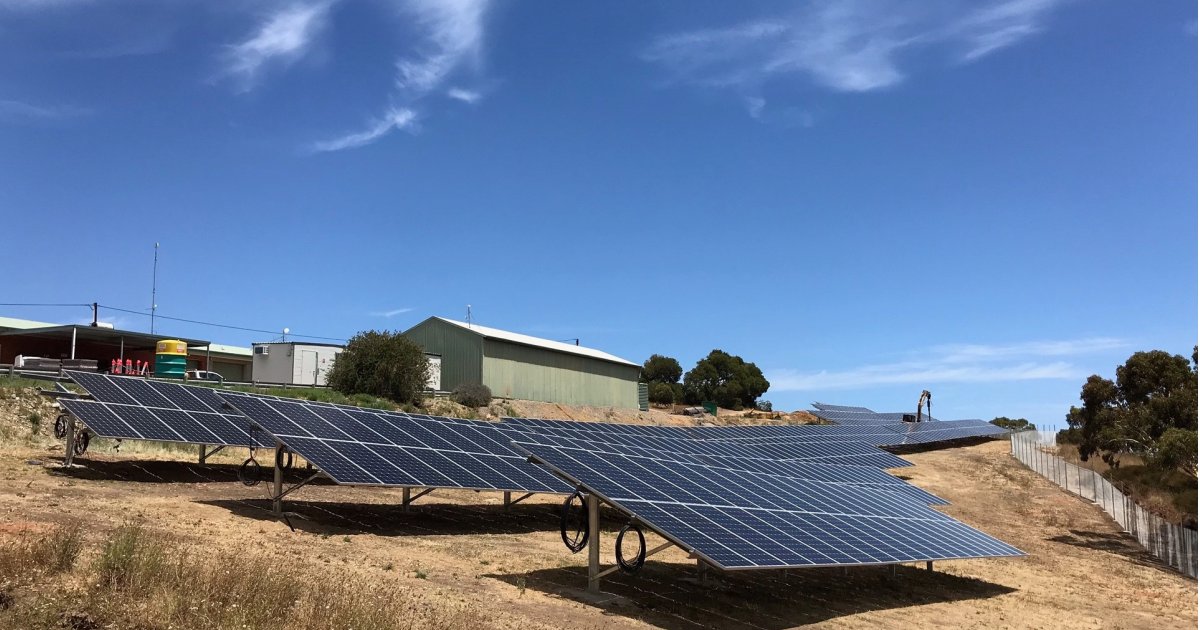
Another big solar power system for SA Water is in place as the utility continues its ambitious PV rollout – and this one also includes battery storage.
This latest installation at SA Water’s Myponga Depot (south of Adelaide) consists of more than 2,000 solar panels and 384 kilowatt-hours of battery storage – that’s equivalent to the storage capacity of around 28 Tesla Powerwall batteries.
While capacity of the solar PV aspect of the Myponga project wasn’t specified, SA Water says the ground-mounted system will generate around 1,200 megawatt hours per year. Based on that figure, the number of panels and Myponga’s solar potential, the system is a guesstimated 800kW, or thereabouts.
The Myponga project follows the completion of another big system just a few weeks ago – 2,900 solar panels and 528 kilowatt-hours of battery storage at Balhannah in the Adelaide Hills.
Solar Energy Rollout Finish Line Ahead
And there’s still more PV to come in what has been a huge project across South Australia – but the finish line awaits.
“We’re excited to finish connecting our remaining 30-plus locations around the state to the national grid over the coming weeks and months, where these sites will thrive in the hot, sunny weather,” said SA Water’s Nicola Murphy.
While solar power systems don’t particularly thrive in hot weather1, increased daylight hours during the hotter months more than offsets the impact.
Under SA water’s Zero Cost Energy Future program, the organisation has invested hundreds of millions of dollars on what will be around 152 megawatts of solar power that will generate an estimated 242 gigawatt hours of solar energy annually, along with 34 MWh of battery storage.
The program was announced in 2017, started to kick off in 2018 and by the end of the 2019/20 financial year, 150,000 solar panels had been installed across the state. By June this year more than 360,000 solar panels were in place and the total number to be installed is around the 500,000 mark. The last 20 months or so have been particularly challenging for the project given various events, but SA Water has continued to power through it all.
In addition to reducing emissions and as the program name suggests, the rollout will dramatically reduce the organisation’s energy costs. SA Water is one of the state’s biggest electricity consumers – its operating energy expenses reached $86 million in the 2019-20 financial year.
There’s a lot to power: dozens of water treatment plants, hundreds of pump stations moving water through tens of thousands of kilometres of pipelines, plus wastewater treatment plants and their associated infrastructure. The PV rollout is expected to provide 70 per cent of SA Water’s electricity requirements in an average weather and water consumption year.
Trivia: 242 gigawatt hours of solar electricity annually is enough to supply the equivalent of around 41,000 Australian households.
Footnotes
- The hotter it gets, the worse solar panels perform – learn more about how heat affects solar panels ↩

 RSS - Posts
RSS - Posts



Speak Your Mind